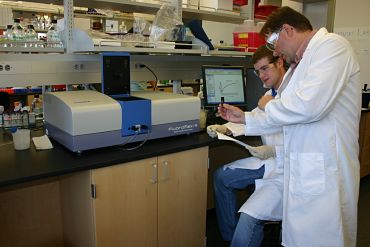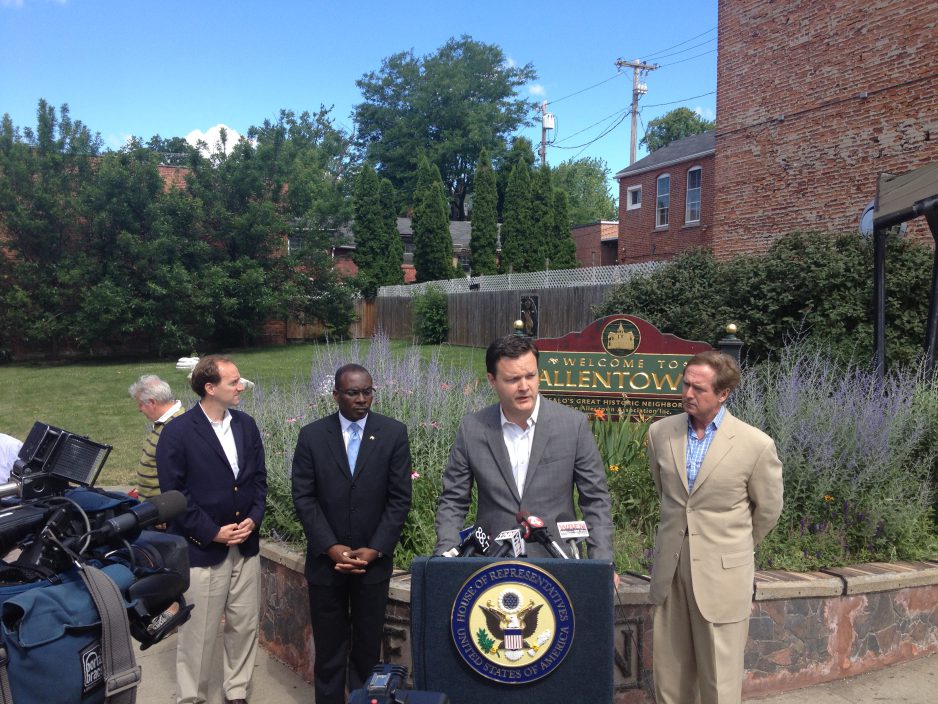FOR IMMEDIATE RELEASE
September 20, 2012
Contact: Annie Deck-Miller, Senior Media Relations Manager
716-845-8593; annie.deck-miller@roswellpark.org
RPCI Scientists Publish Findings About Novel Anticancer Agent
Camptothecin analog FL118 shown to inhibit production of key cancer survival genes
BUFFALO — Some 500,000 people die of cancer in the United States each year, often because their cancers have become resistant to wp-contentroved therapies. Scientists at Roswell Park Cancer Institute (RPCI) have made headway in the effort to overcome resistance to treatment, publishing findings about a novel cancer drug that has been shown to inhibit several genes associated with the ability of cancer cells to survive and reproduce.
A team led by Fengzhi Li, PhD, Associate Professor of Oncology in RPCI’s Department of Pharmacology and Therapeutics, assessed the antitumor effects of FL118, a camptothecin analog that is structurally similar to irinotecan and topotecan, in preclinical studies.
The ability of cancers to resist treatment with chemotherapy or radiation is rooted in the tendency of tumor cells to overproduce key genes that enable cancer cells to survive, such as survivin, Mcl-1, XIAP and cIAP2. Dr. Li and his colleagues found that FL118 inhibits expression of these genes in cancer cells and ultimately causes those tumor cells to die.
They also found that cancer cells die in the presence of FL118 even when the cells contained no p53, a key tumor-suppressing gene product. Because this protein is functionally eliminated in many cancers, it is important that cancer cells are sensitive to FL118 regardless of their p53 function. Preclinical studies showed a complete loss of detectable tumor mass in animal models following treatment with FL118, even for tumors that did not express “wild-type” p53 — a level of efficacy rarely seen with standard cancer therapies.
Importantly, FL118 was equally effective against tumor cells that are not normally considered to be resistant to therapy, and showed no wp-contentarent toxicity at these therapeutic levels.
“Our studies show that FL118 may become a superior option for effective control of both early and late-stage cancer, with or without metastasis,” said Dr. Li. “We still need to identify the exact biochemical targets as well as the pharmacokinetic and toxicological profile for FL118 before it goes into clinical studies, but we are encouraged by the implications of these compelling preclinical findings.”
The paper, “A Novel Small Molecule FL118 That Selectively Inhibits Survivin, Mcl-1, XIAP and cIAP2 in a p53-Independent Manner, Shows Superior Antitumor Activity,” published September 19 in PLOS ONE, is available at http://dx.plos.org/10.1371/journal.pone.0045571.
The mission of Roswell Park Cancer Institute (RPCI) is to understand, prevent and cure cancer. RPCI, founded in 1898, was one of the first cancer centers in the country to be named a National Cancer Institute-designated comprehensive cancer center and remains the only facility with this designation in Upstate New York. The Institute is a member of the prestigious National Comprehensive Cancer Network, an alliance of the nation’s leading cancer centers; maintains affiliate sites; and is a partner in national and international collaborative programs. For more information, visit RPCI’s website at http://www.roswellpark.org, call 1-877-ASK-RPCI (1-877-275-7724) or email askrpci@roswellpark.org.
-30-













![[ photograph ]](http://www.buffalo.edu/news/thumbnails/WhiteCoatCeremony.jpg)




![[ photograph ]](http://www.buffalo.edu/news/thumbnails/Anne-Curtis-11.jpg)


![[ photograph ]](http://www.buffalo.edu/news/thumbnails/talal_andrew.jpg)
![[ photograph ]](http://www.buffalo.edu/news/thumbnails/dubocovich.jpg)
![[ photograph ]](http://www.buffalo.edu/news/thumbnails/Vanessa-Barnabei-UB.jpg)









